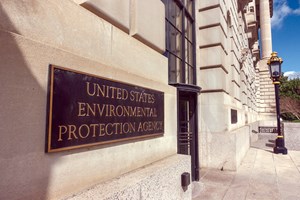Water utilities race to complete lead line inventories as EPA deadline looms
(UI) — As the Environmental Protection Agency’s (EPA) Oct. 16 deadline approaches, water utilities across the U.S. are scrambling to submit detailed inventories of lead service lines as required by the Lead and Copper Rule Revisions (LCRR), according to the American Society of Civil Engineers (ASCE).
Finalized in Dec. 2021, the LCRR aims to mitigate public health risks from lead pipes by mandating that utilities identify and classify all service lines, both public and private, as either lead, non-lead, galvanized needing replacement, or unknown. Public access to these inventories is also required, and utilities must notify customers if their lines are lead or fall under unknown categories.
Looking ahead, water utilities are also preparing for the next phase: replacing all lead and galvanized lines. The EPA's proposed Lead and Copper Rule Improvements (LCRI), introduced in Nov. 2023, sets a goal for the complete removal of these lines by 2037. Some utilities have already made significant strides, while others face various challenges.
Steve Via, the director of federal relations at the American Water Works Association, told the ASCE that assembling these inventories has been a monumental task, requiring utilities to dig into historical documents, maintenance logs, and inspection reports.
“Records have evolved over time, making it harder to track down lead lines,” Via told the ASCE. "Crews often use field inspections during routine tasks to gather more data and confirm findings."
In Louisville, Kentucky, the local water company successfully completed a project to remove all its public lead service lines. Their efforts to identify and replace private lines continue, and the utility has reached out to customers to notify them of possible lead service lines. Louisville Water President Spencer Bruce highlighted the importance of their archives, dating back to 1858, which revealed that the use of lead pipes stopped after World War II. This historical insight helped the utility prepare for the upcoming EPA deadline.
The task of locating lead lines has been likened to detective work. Louisville Water’s Vice President of Strategic Communications and Marketing, Kelley Dearing Smith, shared that they even brought back a retired employee to help decipher old records. Similarly, Greater Cincinnati Water Works (GCWW) utilized its historical archives to determine when lead pipes were banned in 1928, which helped guide their inventory.
The EPA's proposal for the full replacement of lead service lines by 2037 poses further logistical challenges, including securing funding and contractors. GCWW, which currently replaces about 1,200 lines annually, would need to significantly ramp up its efforts to meet the new deadline. One major hurdle, according to GCWW’s lead program manager, Kevin Kappers, is gaining customer cooperation for private lead line replacements, a task that has historically been met with skepticism and low participation rates.
To improve participation, utilities are increasing outreach efforts, often tying replacements to larger infrastructure projects like water main upgrades. Louisville Water, for instance, is working to identify private lead service lines for an estimated 4,000 to 5,000 customers whose line materials remain unknown. The utility plans to offer free replacements but must overcome challenges related to workforce and resource availability.
To assist with identification efforts, many utilities have developed online portals for customers to upload photos of their service lines, but these initiatives have seen limited success. As a result, utilities like Louisville Water are turning to more direct methods, including door-to-door visits, to engage with customers and build trust in their communities.
Related News
From Archive

- Glenfarne Alaska LNG targets late-2026 construction start for 807-mile pipeline project
- U.S. water reuse boom to fuel $47 billion in infrastructure spending through 2035
- $2.3 billion approved to construct 236-mile Texas-to-Gulf gas pipeline
- Major water pipe break in Puerto Rico hits over 165,000 customers
- Potomac River Tunnel project enters construction phase beneath Washington, D.C.
- Pennsylvania American Water launches interactive map to identify, replace lead water service lines
- Trump's tariffs drive $33 million cost increase for Cincinnati sewer project
- Utah city launches historic $70 million tunnel project using box jacking under active rail line
- Tulsa residents warned after sewer lines damaged by boring work
- Fatal trench collapse halts sewer construction in Massachusetts; two workers hospitalized




Comments